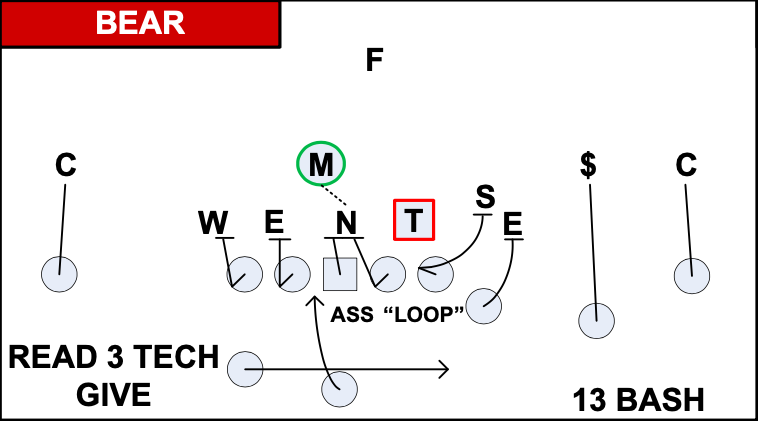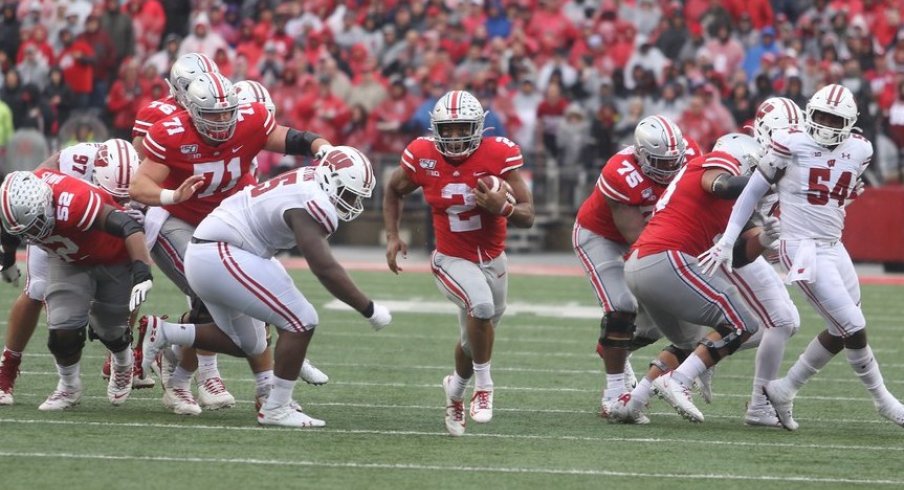"In games like this, it comes down to players, not plays. But you also don't want to get out-schemed. Giving them a good, clean plan with enough wrinkles is critical." - Ryan Day
Though Ohio State returns to Indianapolis for the third straight season, the Buckeyes find themselves in a strange position, playing a team for the second time in seven weeks. While this is their fifth trip to the Big Ten Championship since the game's inception, never before has the team from Columbus had to double-dip like this before.
With a head coach and defensive coordinator who came directly from coaching in the professional ranks, the Buckeyes should be prepared for such a task, however. Day compared playing in this weekend's rematch against Wisconsin to playing a divisional opponent for the second time in an NFL season.
To prepare for such a task, the OSU head coach added that his team will still watch the same amount of film as they always would and that it doesn't give them an advantage that they've already played Wisconsin because both teams are in the same boat. However, he added that the Buckeyes need to be efficient with their film study this week.
"They've done some different things here," Day noted in his mid-week press conference. "They've made adjustments, adapted as the season has gone on. This is going to be a tough game now."
Given the title of this series, now felt as good a time as any to look back at what worked (and what didn't) in the October 26th matchup between these two teams. For the sake of time, we'll focus on the Ohio State offense versus the Wisconsin defense.
To read observations about the Ohio State defense's performance against Wisconsin, CLICK HERE.
Reading the 4i Defensive End with BASH
Justin Fields' ability as a runner wasn't a huge piece of the OSU gameplan the first time around, but the threat of it was enough to be effective. While the Buckeyes used their tight zone-blocking quite often in this game, it wasn't J.K. Dobbins getting the ball inside.
The Buckeyes relied on BASH (Back-Away-Sweep), which has long been in Urban Meyer's arsenal going all the way back to his time at Utah. But simply swapping the role between the QB and RB in a zone-read wasn't the only unique piece of this play.

The Badgers employ a base 3-4 defense but will often play with the alignments of their three down linemen, lining up the ends in a 4i look on the inside shoulders of the offensive tackles to creating a Bear look that plugs inside running lanes. Instead of reading the end man on the line of scrimmage (in this case, an OLB lined up wide), the Buckeyes simply left the 4i end unblocked for Fields to read, resulting in a number of big gains including his third-quarter touchdown keep.
"They also came up with pretty much a new play that we haven’t seen all year that was specifically designed for us and our defensive front, and they actually helped us out a lot, because we saw it against other opponents," Wisconsin middle linebacker Chris Orr said of the scheme this week. "We saw it a lot against Nebraska. And people tried to do their own variations of it."
Adapting the Mid-Zone mid-game
With Fields protecting a sprained MCL, however, the Buckeyes must be able to establish a run threat without their quarterback. Luckily, their bread-and-butter mid-zone scheme asks very little of the man under center.
Though J.K. Dobbins had a huge game against the Badgers, tallying 163 yards on the ground and two touchdowns, he struggled early on as Wisconsin seemed prepared for the Ohio State's favorite run play. The interior of Ohio State's offensive line had a hard time getting to the second level and picking off linebackers, as the massive Badger defensive tackles plugged things up.
At halftime, though, the OSU offensive staff made necessary adjustments. Recognizing that the Badgers were in a four-man front against 11 personnel, removing a down lineman in favor of an extra defensive back, the Buckeye coaches took advantage of that front's desired alignment based on field position.
The Badgers would line up toward the wide side of the field with the nose tackle in the weak A-gap and the 3-technique tackle in the strong side B. Instead of trying to run to the strong side as they had in the first half, the Buckeyes ran weak, allowing the center and front-side guard to work together and get up to the linebacker more easily.
"For me, I think it’s how well they worked together," Orr said this week when asked about the Buckeye offensive line. "They seemed to be on one accord, passing stuff off and working their combo blocks and getting up to the second level. They did a good job of, they worked really together."
Meanwhile, the OSU coaches used the tight ends to cut off backside pressure through creative uses of pre-snap motion, ensuring that Fields didn't have to be the one occupying that end's attention by way of keeping the ball to run.
Checking down to J.K. Dobbins
Dobbins had a big game as a receiver that afternoon as well. Though his primary responsibility was often picking up extra rushers in pass protection (more on that in a moment), the running back was often disregarded by underneath Badger defenders who seemed more concerned with keeping an eye on Fields as a runner.
As a result, Dobbins was Ohio State's second-leading receiver that day, hauling in three catches for 58 yards, all of which came as check downs. As both teams prepare for the rematch, the Badgers will assuredly try to keep an eye on #2 releasing out of the backfield.
Problems in Pass Protection
One reason Dobbins was left open was the aggressive nature of Wisconsin's linebackers against the pass. Long the most talented and important unit in coordinator Jim Leonhard's system, the Badger linebackers triggered to fill downhill at a moment's notice, leaving OSU run-pass-options in the dust.
But the linebackers were also heavily involved in designed pass rushes when Ohio State faced clear passing situations. The Badgers unveiled a variety of stunts that seemed to confuse the OSU line, resulting in a season-high five sacks surrendered by the scarlet and gray that afternoon.
With Justin Fields' health a top priority, pass protection must be improved. The Badgers' pass rush was no fluke, as they rank fifth nationally in sacks and have registered at least four sacks in a game on seven different occasions this fall.
Unlike Ohio State, who relies heavily on edge rushers like Chase Young to win one-on-one battles to get to opposing quarterbacks, the Badgers scheme up ways for both interior and edge players to get home. If there's ever been a time for the Buckeyes' ballyhooed interior offensive linemen to step up, this is it.
Finding the seams in Quarters coverage
When Fields was able to stand tall in the pocket with time, however, he had plenty of open receivers. Day and the offensive brain trust seemed to have a field day identifying the weak spots in Wisconsin's Quarters-based coverages.
Though weather prevented Fields from dropping back all that often, he often had open crossers underneath.
Knowing the Badger cornerbacks would hand off a shallow crosser to the inside linebacker in their man-match coverage, Chris Olave was simply in a footrace with the much slower defender, giving Fields and easy throw and catch. This route was open throughout the day, with only the weather acting as the Badgers' best defense to slow it down.
But the prettiest play of the afternoon was also the best play-call. Facing 3rd and 13, the Badgers came out in a conservative shell, attempting to keep everything in front of them. However, the Buckeyes knew the defense would shift into a Special/Mini/Inside Palms call against a 3x1 set, which leaves the cornerback alone in man-coverage against the receiver furthest outside.
While the rest of the defenders to that side worked a 3-over-2 match on the inside receivers, Olave ran underneath on what appeared to be a crossing route before streaking up the seam, leaving the cornerback trailing with no help from his teammates.
Scheming up an open route like this is what has separated Ryan Day and his staff from others across the country, turning the Buckeyes into one of the most efficient passing attacks in the country, and leaving opponents with few answers.
"They pretty much can do everything," Orr said of the Buckeyes. "They pretty much do everything really well. They have good players in the right positions, and they scheme it up to get them the ball in space and let them do what they do, so it’s going to come down to all 11 of us handling our business."



